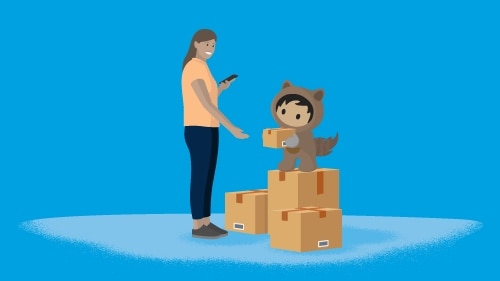With threats like Amazon and fast-moving pure-play companies that seem to emerge in the market daily, consumer goods (CG) companies are racing to meet rapidly changing consumer expectations that have unglued the traditional product sales model. Add already existing pain points in the relationship with retailers, and CG companies are left with a three-part conundrum:
- How can I most effectively meet consumer expectations?
- How do I take back control of my brand experience?
- How can I build loyalty (while avoiding competition with my existing revenue streams)?
The answers lie in going direct-to-consumer (D2C). D2C channels offer unprecedented access to ownable consumer data so CG companies can get acquainted with consumers, understand habits and behaviors to better adapt the journey, and build lasting relationships. That’s something distribution partners — even Amazon — cannot do for your brand.
D2C is part of the future of CG — and 99% of CG leaders say they are already investing in D2C sales. If you’re considering creating a D2C ecommerce site, keep reading to learn how to:
- Create the best shopping journeys
- Achieve a single view of your consumer
- Deliver personalized commerce experiences
You can also find best practices and tips in Going Direct-to-Consumer, the step-by-step guide to building a D2C ecommerce site.
1. Map your plan to the end consumer
A seamless experience requires a game plan for operations, production, and service that gives consumers choices at every stage of the journey. We’ve outlined — at a high level — the ways to optimize your experience.
- Search engine optimization (SEO) strategy: This includes the keywords and search terms that will push your site to the top of search engine results and foster an understanding of search intent, such as the difference in search queries between mobile and desktop. (AnswerThePublic is great for this.)
- Digital site strategy: Account for the content that will surface above and below the fold and understand the overall user experience throughout the entire purchase journey.
- Merchandising: Surface the right products to the right consumers with appropriate merchandising techniques — with some help from artificial intelligence (AI).
- Order management and fulfillment: Your order management system and fulfillment should give consumers the choice to ship and return online (or in-store if you also have brick-and-mortar locations) and be able to handle individual orders. To adjust your fulfillment model, look to third-party fulfillment partners for support.
- Marketing and communications: Paid advertising campaigns, social media, email, partnerships, and more will get the word out about your brand. Engaging, informative, and relevant messaging on a regular cadence — tied to consumer journeys that you always evaluate and evolve — keeps consumers coming back.
- White-glove service: Ensure customer satisfaction with service on every channel, from onsite chat to SMS to social messenger. Help agents resolve escalated cases faster with the right tools and empower consumers with self-service through community portals and an FAQ page on your site for the most common questions and answers.
2. Leverage data for a full view of the consumer across the journey
A single view of your data is the key to unlocking the best consumer experiences throughout the entire journey. A unified engagement platform aggregates data across every channel for a 360-degree view. Providers like Salesforce Commerce Cloud make it easy to achieve this so that you can deliver the personalized experiences that build loyalty.
Consider this use case in how data influences the consumer journey:
- During the discovery phase, a brand sends a targeted email with a special offer and deploys highly targeted ads on social.
- Thanks to intelligent site search, when the consumer goes to the brand’s site and searches for a product, they are served exactly what they’re looking for.
- If the consumer navigates away from the site, a re-engagement trigger sends an email about products left in their cart.
- When the consumer gets back onsite, they finish making their selections and check out with their preferred payment method and shipping option.
- The consumer immediately receives an email with their order confirmation and status as well as other relevant product suggestions they may be interested in.
- After the order is received, the consumer receives another email with an additional coupon incentive to drive repeat purchase.

3. Create personalized shopping experiences at scale
AI enhances the customer experience because it powers personalization at scale. It analyzes the nuances and behaviors from consumer data across touchpoints and surfaces relevant content that increases the likelihood of conversion. Here are just some of the ways it works:
- Product recommendations: Merchandising is automated so relevant product recommendations are presented to every consumer.
- Search dictionaries: The right search terms appear while the consumer types them — even if they’re not already in your dictionaries – with synonyms, hypernyms, and search redirects.
- Predictive sort: The order in which products appear in search results and on category pages is customized based on the consumer profile.
- Visual search: Shopping from a photo is possible with AI-powered visual search technology.
- Insights: Actionable insights derived from data collected on your site give visibility into things like what products are most frequently purchased together.
Get started
Going D2C is your opportunity to know your consumers in ways you never have before. Access to first-party data will refine your strategies, evolve your journeys, and exceed expectations. If you’re ready to jump, learn more about the steps you need to take to bring your brand and consumers together.




























